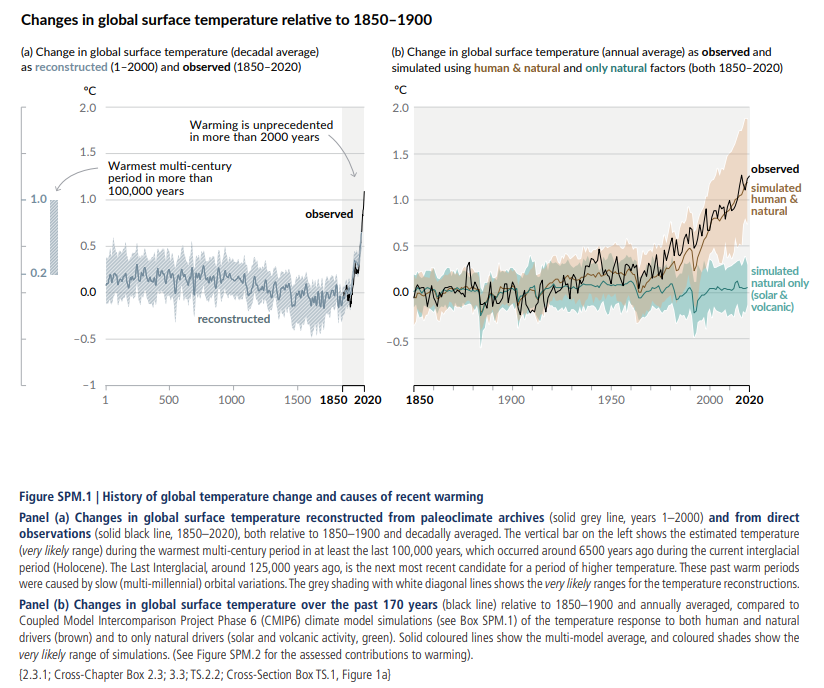Commercial Roofing as a Sustainability Benefit Multiplier
Learning Objectives:
- Define sustainability.
- Evaluate operational carbon, embodied carbon, and whole life carbon footprint of buildings.
- Discuss how roofing contributes to sustainability goals.
- Integrate holistic system design approaches to roofing overburden.
Credits:
Sustainability is too often seen as an afterthought to how we design and construct buildings. However, if we shift our thinking to a more holistic approach to not only the building itself but how it interacts with its surrounding environment and community, and use collaborative design from the start of the design process, the carbon footprint can be minimized, and limiting global Greenhouse Gas (GHG) emissions to 1.5 degrees Celsius can be achieved.1
Commercial roofs can be “benefit multipliers” by integrating renewable energy, rainwater management strategies, and rooftop agriculture to address our changing environment and more severe storms.
The intent of this course is to discuss the interconnectedness and interrelations of roof strategies that can help minimize whole building carbon emissions while, at the same time, improve long-term performance, durability, and resiliency by using overburden strategies to alleviate the community burden of climate change.
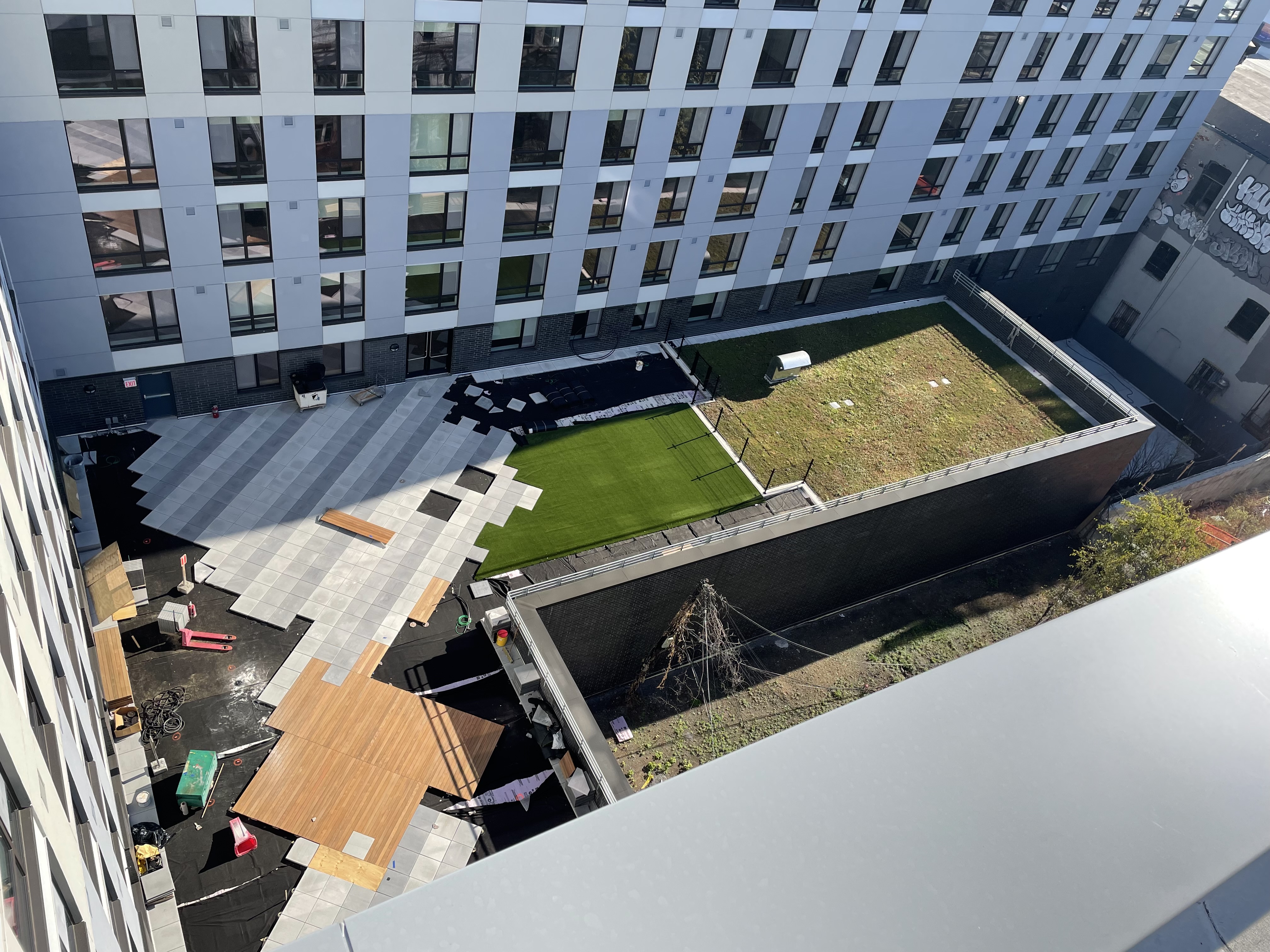
Photo courtesy of Shawn M. Torbert, M.S., CPHC/D, LEED AP
Let’s Start with a Definition
In 1987, the United Nations Brundtland Commission defined sustainability as “meeting the needs of the present without compromising the ability of future generations to meet their own needs.”2 While this definition can be interpreted as overly simplistic and too broad, it highlights the key ingredient of sustainable development: time. It is specifically the temporal component that we as humans seem to struggle with. We tend to create a false dichotomy between short-term gains and long-term impacts. However, sustainability is not asking us to sacrifice our needs today, quite the opposite. It is explicitly telling us that we should meet our needs today; however, we must not get bogged down in short-term thinking and keep an eye on the future to ensure future generations are not jeopardized by the decisions we make now.
The Earth is Warming: IPCC Report
The climate data in the most recent International Panel on Climate Change (IPCC) report makes it evident that the Earth is warming and the effects of climate change are already being felt. The IPCC 2021 report states, “It is unequivocal that human influence has warmed the atmosphere, ocean and land. Widespread and rapid changes in the atmosphere, ocean, cryosphere and biosphere have occurred.”3
In the U.S., catastrophic weather events such as severe storms, flooding, drought, heat waves, and wildfires have become more frequent and more costly. As NOAA National Centers for Environmental Information (NCEI) reported in January 2022,
“In 2021, the U.S. experienced 20 separate billion-dollar weather and climate disasters, putting 2021 in second place for the most disasters in a calendar year, behind the record 22 separate billion-dollar events in 2020. What really made 2021 stand out was the diversity of disasters:
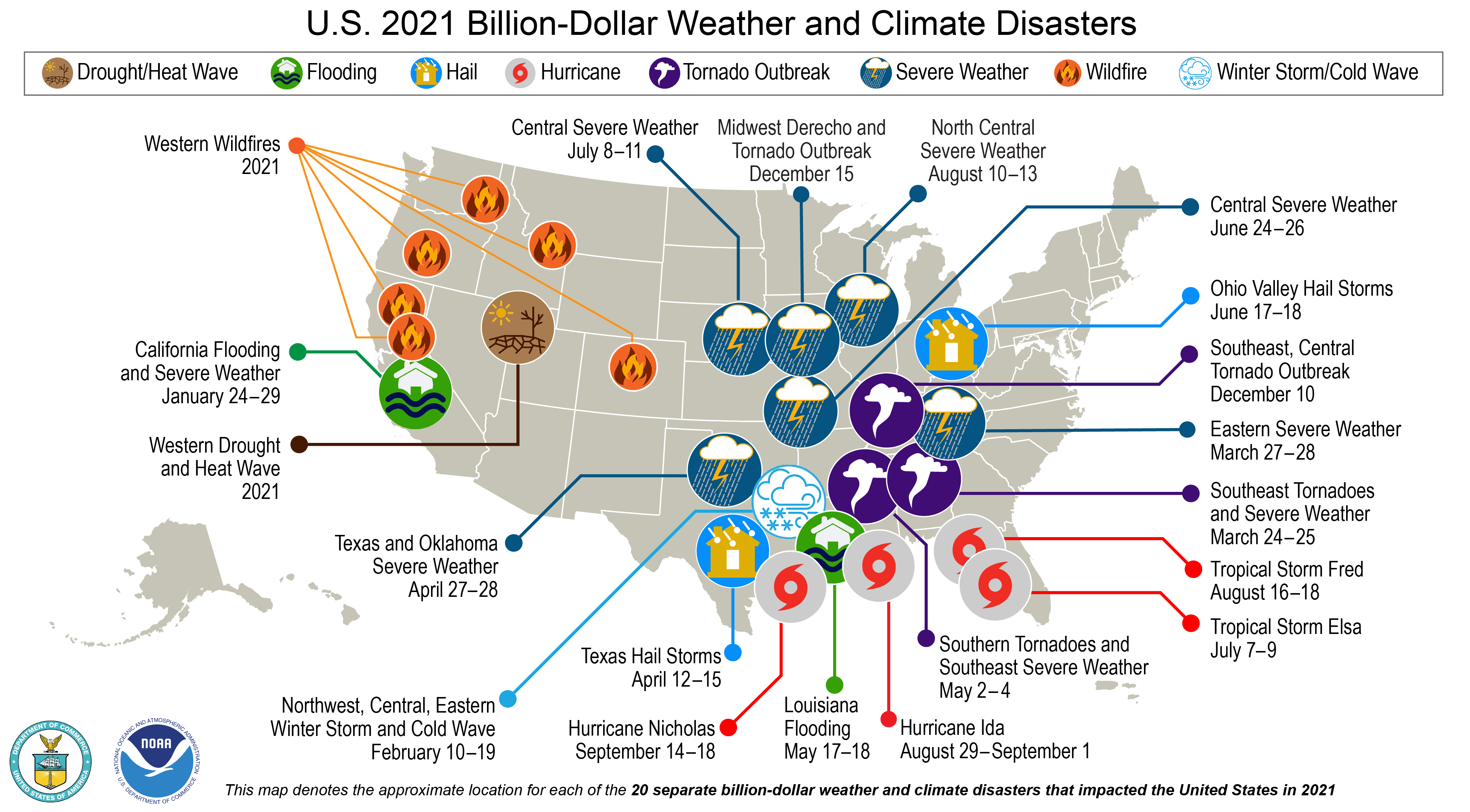
Image courtesy of NOAA
U.S. 2021 Billion-Dollar Weather and Climate Disasters.
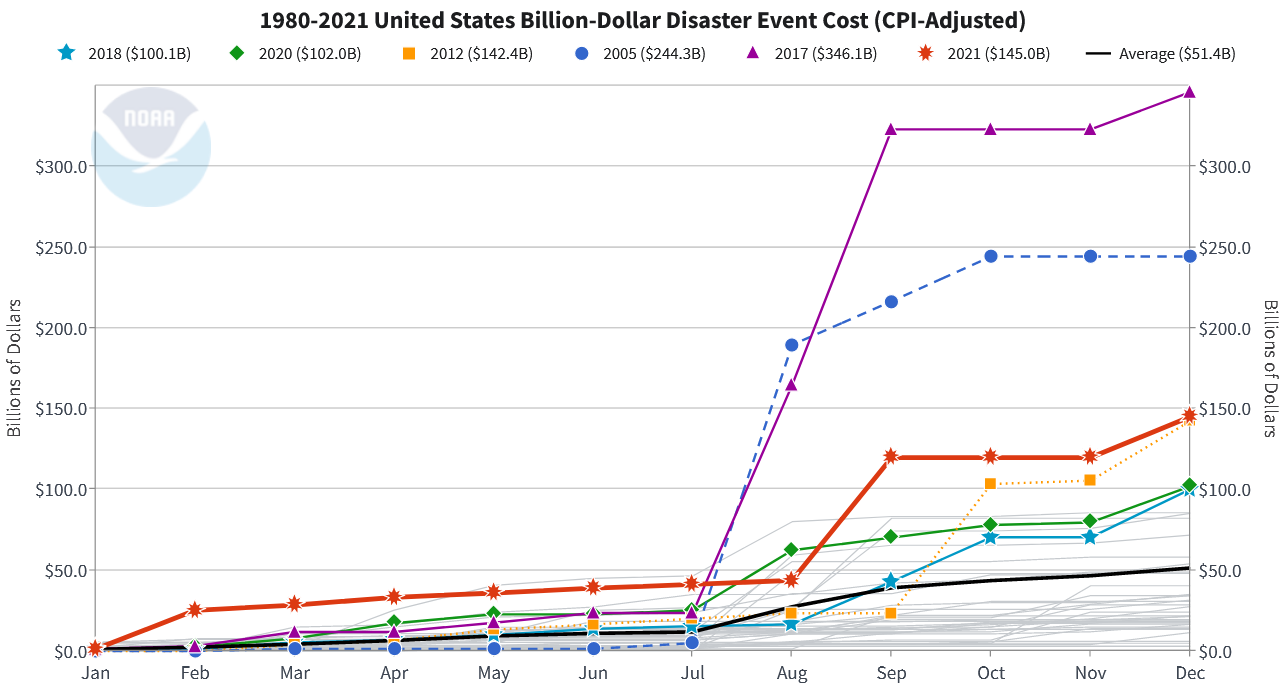
Image courtesy of NOAA
Cost of Disaster Events.
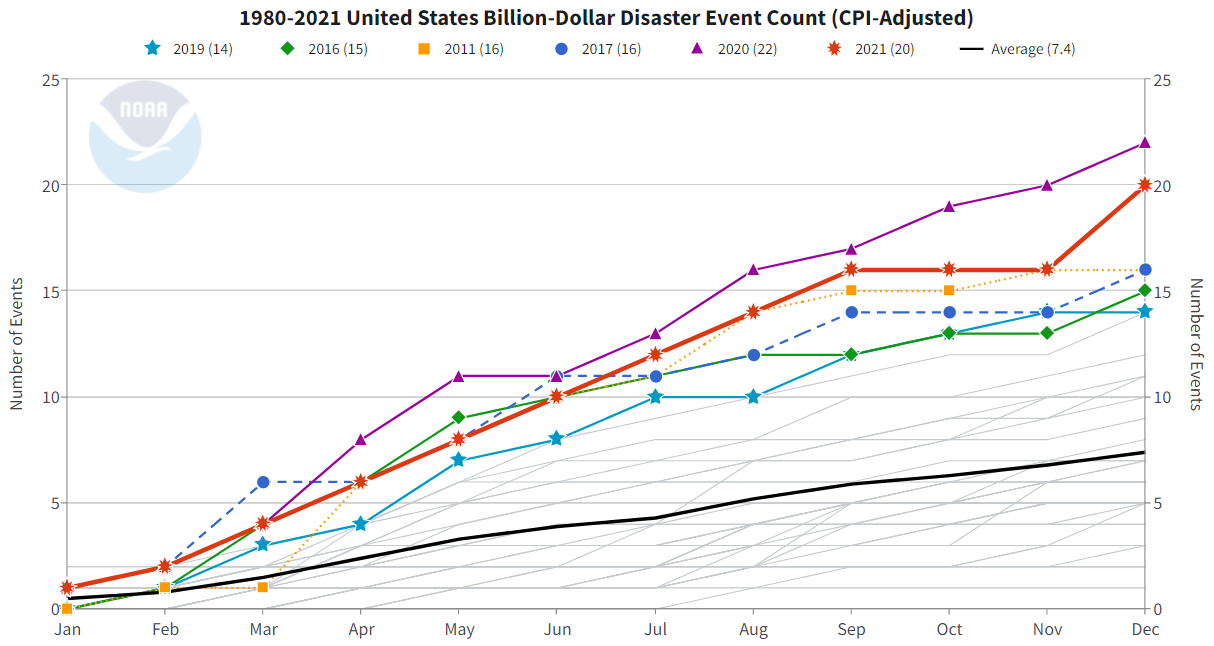
Image courtesy of NOAA
Frequency of Disaster Events.
Indeed, climate change is here. So what can we do about it? As the IPCC report recommends, “From a physical science perspective, limiting human-induced global warming to a specific level requires limiting cumulative CO2 emissions, reaching at least net zero CO2 emissions, along with strong reductions in other greenhouse gas emissions. Strong, rapid and sustained reductions in CH4 emissions would also limit the warming effect resulting from declining aerosol pollution and would improve air quality.”5
So, we need to limit CO2 emissions to reach net zero emissions; or, in other words, decarbonize human activities on Earth. In addition, emissions of methane (CH4), another potent greenhouse gas, should be limited and reduced. How methane relates will be discussed later as we evaluate source energy, renewables and embodied carbon.
How much time do we have? The IPCC estimates that we have approximately 10-30 years to limit global warming to 1.5C (2.7 degrees Fahrenheit) and minimize the most catastrophic effects of climate change.6 It is worth noting that this is based on current rates of emissions; so, continuing with “business as usual” gives us 10 years at best, while significantly reducing emissions immediately will provide more time to limit warming. Although this may seem impossible, our built environment is the best driver and has the greatest potential impact to solve the climate crisis and save not only ourselves, but also future generations. By using a holistic approach to understanding how building systems are interrelated to total building energy use, while at the same time interconnected with the larger energy infrastructure ecosystem and community, building professionals have the unique opportunity and the responsibility to affect positive change to preserve the planet for human habitation.
It’s Not Too Late—Architecture 2030
At the 2021 United Nations Climate Change Conference, more commonly known as COP26, Ed Mazria from Architecture 2030 delivered a road map on how the built environment can reach zero emissions by 2040. If CO2 emissions are reduced 65 percent by 2030, there is a better than 67 percent probability that zero emissions can be met by 2040.7 As Mark C. Pederson noted in 2020, “The news about real action on climate change tends to track toward the gloomy. It is easy to despair, given the severity of the problem and the time left to properly address it. But there is progress being made in the built environment—just not nearly fast enough to offset emissions elsewhere. In recent years the sector has added billions of square feet of new buildings, but seen energy consumption for the entire sector actually decline.” 8
In other words, building energy efficiency measures are working and we have already decoupled emissions from building energy use. This is a cause for optimism, as this has been accomplished even as the population continues to grow. One of the main contributors to efficiency improvements over the last decade has been building enclosure upgrades that use more robust continuous insulation, air tightness measures, and—the opposite side of the same coin—more efficient mechanical systems for ventilation, heating and cooling. While it’s tempting to give all the credit to the natural gas transition and renewable energy installations, the impact of high efficiency building enclosures cannot be underestimated. On the other hand, we need to do better and we can do better. By going beyond code minimums and using holistic energy efficiency design strategies for all new construction, net-zero operational emissions can easily and cost effectively be met today. However, the main obstacle to accomplish this at scale is not a technological issue, it’s a labor issue. In order to reduce the building sector’s emissions to meet Architecture 2030’s goals, it must be done rapidly and at scale. The construction industry requires a massive workforce development and training program on how to build and retrofit existing buildings using energy efficiency design principles. This workforce development applies not only to younger generations, but also to older workers who need new skills where their industries have become obsolete. An added benefit to scaling workforce development for energy efficient construction is that construction jobs tend to be localized which keeps money in the local community, creates other local businesses to support the construction sector, and provides a more resilient local economy that is buffered from global market fluctuations in an increasingly volatile stock market.
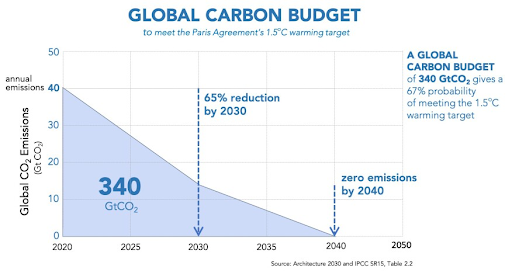
Image courtesy of Architecture 2030
There’s a 67 percent probability of meeting the 1.5 degree C target if CO2 is reduced 65 percent by 2030.
It is commonly thought that buildings account for approximately 30-40 percent of GHG emissions. However, as the chart below shows, when we factor in the embodied carbon, or “... the greenhouse gas emissions arising from the manufacturing, transportation, installation, maintenance, and disposal of building materials of building materials and construction,” buildings account for nearly half of global emissions.9 If we look at urban centers like New York City, over 70 percent of emissions come from building operations, (i.e, heating, cooling, and plug loads).10 In addition, approximately 83 percent of the U.S. population lives in cities.11 So, it follows that fixing the urban built environment can have the greatest impact to realize climate action goals and preserve the welfare of the most people. As noted earlier, this is no small task and requires a collaborative holistic approach as well as workforce training and mobilization at a scale not seen since World War II.
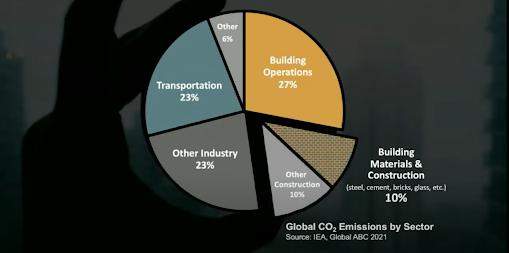
Image courtesy of Architecture 2030
The building sectors contribution to CO2 emissions.
While there is a role for government in incentivizing a rapidly scaling market transformation, the private sector is the main driver in affecting this change. In fact, some manufacturers already have trade training programs to educate the unemployed, the underemployed, military veterans, and the formerly incarcerated at a scale to meet the labor shortages that already exist in the construction industry.12 It is not a huge leap to incorporate energy efficiency principles into these types of training programs.
With many U.S. states and car manufacturers setting goals for 100 percent electrification by 2035, transforming the built environment has the unique capability to significantly reduce or eliminate emissions from the transportation sector. This, however, requires a shift from the traditional way of thinking about buildings as static, standalone units to a dynamic part of a larger interconnected community infrastructure ecosystem. Every building has the potential to generate more energy than it uses. By integrating rooftop solar, electric vehicle charging infrastructure, and battery storage into energy efficient building designs, a large part or all of the transportation sector emissions can potentially be eliminated. This not only helps reduce emissions but also reduces transmission losses from delivering electricity over long distances and creates a more resilient localized energy grid to minimize power outages from the aging large scale electric infrastructure.
So What Does This Have to Do with Roofing?
The primary purpose of roofs is to provide shelter from the elements. However, roofs are the often unseen work horses of our buildings. Roofs already do a lot of heavy lifting, both literally and figuratively. Whether it’s providing protection against wind, rain, snow and hail, or reflecting solar rays, supporting rooftop mechanicals, minimizing fire risk, providing daylighting, and insulating—roofs humbly endure for decades.
This “out of sight and out of mind” perception of roofs is changing rapidly as the population grows and becomes increasingly urbanized in a warming world. In New York City, Local Laws 92 & 94 have already been enacted and require that, “The sustainable roof must include a solar photovoltaic system generating at least 4kW, a green roof system, or a combination of the two. Vertical or horizontal enlargements must also comply with these requirements.”13 In addition to the solar and vegetated roof mandate in NYC, “Local Law 94 increases the SRI (solar reflectance index) of cool roofs to keep up with LEED v4. The law also adds new reflectance requirements for sloped roofs. Coatings are readily available, inexpensive and easy to apply.”14
Similar laws and ordinances exist in various cities across the U.S. For example, Seattle has the Seattle Green Factor, a landscaping requirement that green roofs can help meet.15 In addition, Seattle is also requiring roofs to be solar energy ready.16 Washington, D.C. has rebates for vegetated roofs to help manage rainwater, and initiatives for rooftop solar.17,18
Roofs now may need to incorporate vegetation, rainwater capture, rainwater retention/detention, and solar arrays. In addition, roofs are now being used for urban agricultural purposes, biodiversity restoration, and much needed outdoor greenspace in cities with high population densities. Roofs are a climate benefit multiplier that sustainability professionals and the AEC community alike should be collaborating on to develop strategies and solutions for.
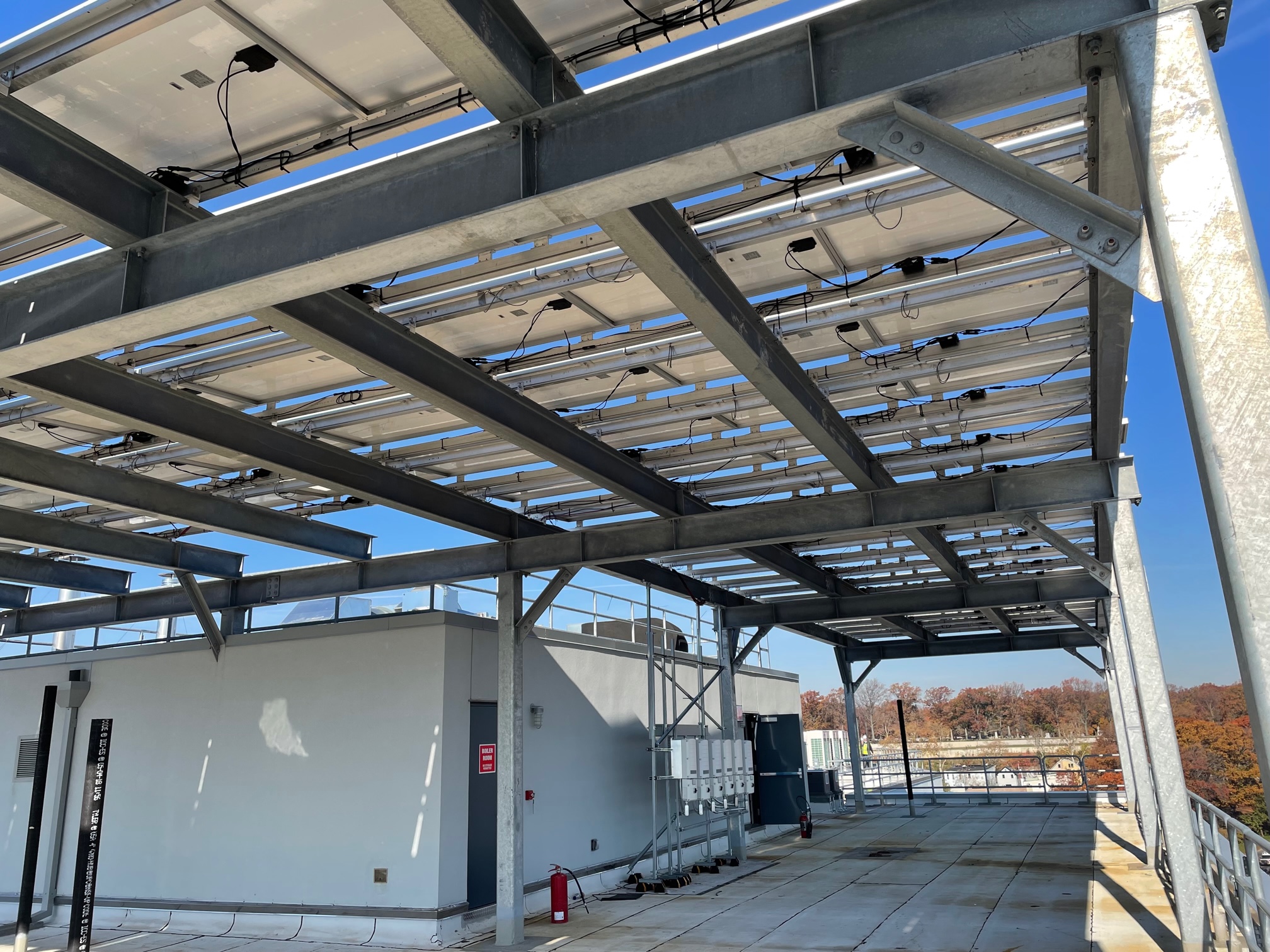
Photo courtesy of Shawn M. Torbert, M.S., CPHC/D, LEED AP
A rooftop solar canopy in Brooklyn, N.Y.

Photo courtesy of Shawn M. Torbert, M.S., CPHC/D, LEED AP
Overburden on a rooftop in Brooklyn, N.Y.







